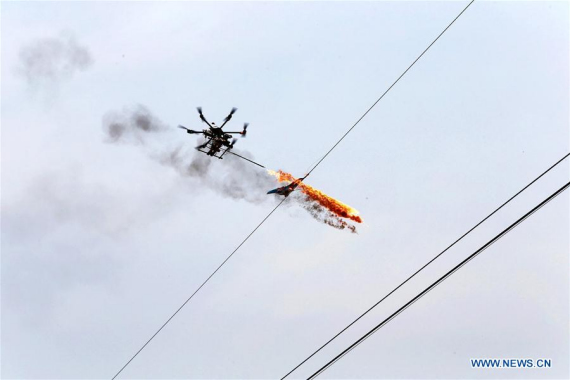
Shipment of consumer-level drones rose considerably last year. "But in terms of market value, it is still the industrial drones that take the lead," Xiao said.
While the expansion has brought huge amount of capital into the industry and attracted more people to join in, some players say the market may see a shakeout within the next two or three years, when a number of manufacturers may be weeded out.
Many drone makers in the country have already entered the stage of B-round financing, and funding has been tightening, Gui Xiaoyan, founder of drone maker Skye Intelligence, said.
"The drone industry has, in general, gone through the starting-up period. If those who entered the industry at an early stage aren't able to develop advantages in their products, they may soon be weeded out," Gui told the Securities Daily, adding only those with advantages in specific functional areas would survive in the long term.
In this rapidly emerging high-tech industry, there are still a lot of grey areas, blank spaces and impediments that need to be addressed before it could achieve substantial development.
One of the bottlenecks lies in the lack of mass production capability in drone makers, Xiao said. "The supply chain of civil drone industry is currently immature. Factories are still making efforts to boost the rate of production of qualified products."
Lack of a full-fledged regulatory system is also a concern, Wu said. There are currently no systematic regulations governing the civil drone industry in the country.
On Dec 30, 2015, the Civil Aviation Administration of China introduced a regulation for civil drones operating in the area of general aviation business. The regulation, which was open for public review till Jan. 8 and is expected to take effect on Feb. 1, rules that civil drones need to get operational approval before they can embark on general aviation business.
Some drone makers are not pleased, and argue the civil drone industry cannot be subjected to the same administrative procedures as enterprises in general aviation.
About 150 industry players, scholars and drone enthusiasts reportedly signed a letter of protest against the implementation of the new regulation.
Despite the controversy, Xiao views it from a positive side. "It shows that the government is making efforts to regulate the industry. Under the regulation, disqualified manufacturers or those with low capacity may be expelled from the market."
As the industry becomes more regulated and mature, market players and analysts believe it is technology that will finally decide the fate of drone companies.
"Adjustment and knock-out are the natural laws in any industry," said Lin Weidong, president of Shenzhen Art-Tech R/C Hobby Co Ltd. "Only those with core technologies and a precise positioning (of their products) can survive."
Lin expects the percentage of drone companies with manufacturing and operational capability would decrease to 2 percent, or less, of the current number within five years.
"Only companies with a forward-looking business model and leading technology will stay in the market longer," said Jason Low, a research analyst from market research firm Canalys.
Low and IDC's Xiao also believe that a drone ecosystem should be built for long-term development of drone companies.
"Attracting developers to join and to build up a drone ecosystem is a way to differentiate. With help from partners and developers, drone makers are more likely to come up with verticals such as farming, land surveying, so on," Low said.


















































